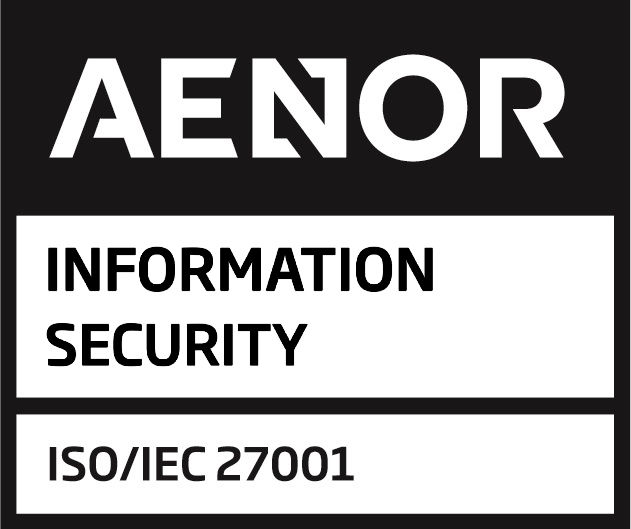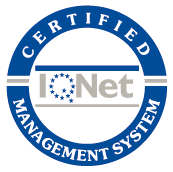
Employee engagement is a concept that has gained increasing importance in the business world. Engaged workers have been shown to be more productive, innovative and loyal, resulting in companies that keep their employees engaged having a significant competitive advantage over their competitors. Measuring employee engagement is not, however, a straightforward task and many HR professionals face the difficult challenge of identifying and using the right tools to do so.
Table of Contents
What is Employee Engagement?
Employee engagement is a term that describes the level of emotional commitment and motivation that a worker has towards their job and the company they work for. An engaged employee goes beyond simply performing their daily tasks: they do so with enthusiasm and dedication, aligning their personal goals with those of the organisation they work for. This type of employee feels a deep connection with their work, which in turn drives them to give their best.
Engagement should not be confused with job satisfaction. While a satisfied employee may be happy with their job, they are not necessarily engaged. Engagement goes beyond satisfaction, encompassing aspects such as passion, loyalty and the desire to contribute to the organisation’s success.
The Importance of Employee Engagement
Employee engagement is crucial for several reasons:
- Increased Productivity: Engaged employees tend to be more productive. Being motivated and aligned with the company’s goals, they constantly seek ways to improve their own performance and that of their team.
- Reduced Staff Turnover: When employees are engaged, they are less likely to leave the company. This reduces the costs associated with hiring and training new employees.
- Improved Customer Satisfaction: Engaged employees often provide a better customer care service, leading to greater customer satisfaction and loyalty.
- Fostering Innovation: An environment where employees feel valued and heard is conducive to innovation. Engaged employees are more willing to contribute ideas and creative solutions.
Common Issues in Measuring Engagement
Measuring employee engagement is not without its challenges. Some of the most common issues include:
- Lack of Clarity in the Definition: Engagement is a broad and sometimes abstract concept. Without a clear and shared definition within the organisation, it is difficult to measure it effectively.
- Inadequate Tools: Many companies use job satisfaction surveys as a measure of engagement, which is a mistake. Satisfaction is only one component of engagement, but it does not encompass it entirely.
- Infrequency of Measurement: Some organisations conduct engagement surveys only once a year. This approach is problematic, as it does not capture the fluctuations in employee engagement over time.
- Lack of Follow-up: Measuring engagement without taking concrete action based on the results can be counterproductive. Employees may feel frustrated if they do not see changes being implemented after they have expressed their opinion on a given issue.
Ways to Measure Employee Engagement
Various methodologies and tools already exist for measuring employee engagement. The following are some of the most effective:
1. Engagement Surveys
Surveys are the most widely used tool for measuring engagement. These surveys typically include questions related to job satisfaction, alignment with company values, relationship with supervisors and perception of professional growth.
- Frequency: We recommend conducting these surveys on a regular basis, ideally quarterly, to capture the evolution of employee engagement over time.
- Design: The questions should be clear and relevant. It is useful to include both closed-ended questions (with response scales) and open-ended questions that allow employees to express their opinions in more detail.
- Analysis of Results: The collected data should be carefully analysed to help locate any patterns and trends. It is crucial to share the results with employees and work on an action plan to address any areas which have been identified as needing improvement.
2. One-on-One Interviews
In addition to surveys, individual interviews can provide a deeper insight into employee engagement. These interviews allow employees to express their feelings and opinions in a safe, confidential environment.
- Participant Selection: It is useful to interview a representative sample of employees from different levels and departments to gain a holistic view of engagement in the organisation.
- Key Questions: During the interviews, it is important to ask open-ended questions that invite reflection, such as: “What motivates you to come to work every day?” or “What would you improve in the company to feel more engaged?”
3. Focus Groups

Focus groups are discussion sessions in which a small group of employees share their views on specific topics related to engagement. This format allows for an in-depth exploration of the reasons behind engagement levels.
- Moderation: The sessions should be moderated using a facilitator to guide the discussion and ensure that all participants have the opportunity to express their views.
- Topics to Address: Topics may include organisational culture, development opportunities and internal communication, among others.
4. Performance Data Analysis
Analysis of performance data can provide indirect indications of the level of employee engagement. For example, high productivity, low turnover and lower absenteeism rates are often associated with higher engagement.
- Key Indicators: Some of the indicators which could be analysed include turnover rate, absenteeism index, participation in training and development programmes, and performance evaluations.
- Comparison with Surveys: It is useful to compare performance data with engagement survey results to identify correlations and better understand the underlying causes for current rates of engagement.
5. Employee Net Promoter Score (eNPS)
One metric that has established itself as essential for measuring employee satisfaction and engagement is the Employee Net Promoter Score (eNPS). This indicator not only provides a clear picture of the extent to which employees are loyal to the organisation, but is also a direct reflection of company culture.
- What is eNPS?: eNPS is based on one key question: “On a scale of 0 to 10, how likely are you to recommend this company as a good place to work to a friend or colleague?” Employees who respond with a 9 or 10 are considered “Promoters,” those who respond with a 7 or 8 are “Passives,” and those who give a score of 0 to 6 are “Detractors.” The eNPS is calculated by subtracting the percentage of Detractors from the percentage of Promoters.
- Advantages of eNPS: This metric is simple and easy to implement, allowing organisations to quickly gain insight into the level of engagement and loyalty of their employees. Additionally, as a standardised measure, it allows for comparisons with other organisations and other sectors.
- Limitations of eNPS: Although it is a valuable metric, eNPS should not be used in isolation. It is important to complement it with other engagement measurement tools to obtain a more complete and nuanced overview.
6. Continuous Feedback
Creating a culture of continuous feedback is essential if you wish to measure and improve employee engagement. Tools such as peer-to-peer recognition platforms, regular review meetings and pulse surveys allow employees to express their opinions in real time.
- Pulse Surveys: These are short questionnaires or surveys which employees complete on a regular basis.They are a successful way of capturing employees’ mood and engagement at a given moment and are often used to measure the impact of recent changes in the organisation.
- Recognition Platforms: Regular and sincere recognition for a job well done is an effective way to foster engagement. Allowing employees to recognise each other reinforces the company culture and promotes a positive work environment.
Conclusion
Measuring employee engagement is essential for any organisation wishing to remain a competitive player in today’s marketplace. A high level of engagement not only improves employee productivity and loyalty but also contributes to a positive work environment and talent retention.
Effective engagement measurement requires the use of a combination of tools and methodologies, tailored to the needs and characteristics of the organisation. The Employee Net Promoter Score (eNPS) is one of the most effective and simple metrics to measure employee loyalty and engagement, but it should be combined with other tools to obtain a better and more complete overview.
Moreover, it is vital to act on the results obtained, demonstrating to employees that their opinions are valued and that the company is committed to their well-being and development.
At the end of the day, employee engagement is not only an indicator of success, but also a key driver to achieve the company’s strategic objectives.
Are you ready to measure and improve engagement in your organisation? Seize the moment – act now!









